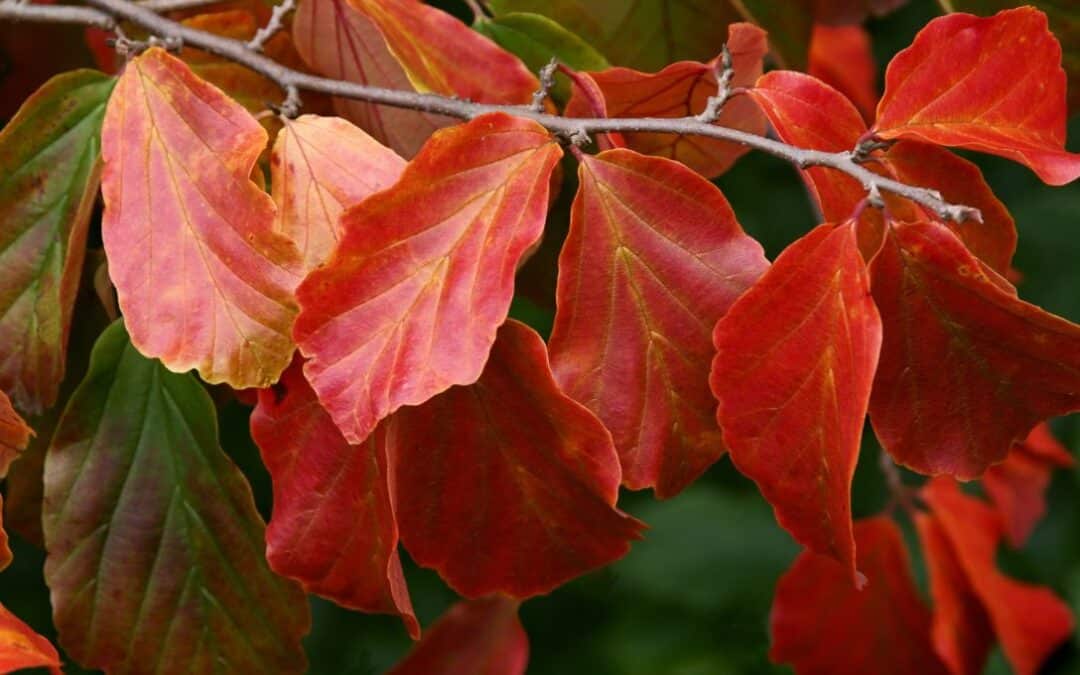
by Matthew Kemble | Nov 19, 2022 | News
If you are looking for a showy landscape tree that is both hardy and drought-tolerant, Parrotia persica is a perfect choice. This deciduous tree grows to 40 feet with an upright branching habit. The leaves are a deep green and turn shades of yellow and red in the fall. In late winter/early spring, Parrotia persica produces clusters of fragrant red flowers that bees love. Best of all, this tree thrives in dry conditions and is resistant to pests and diseases.
Parrotia Persica is an excellent addition to any garden. In this blog post, we’ll take you through an in-depth of this plant, from its plantation to caring. We’ll also share some of the most commonly asked questions about this plant. So, let’s dig into it.
Parrotia Persica Tree Vs Parrotia Persica Hedge
Parrotia Persica Tree
Parrotia persica, also known as the Persian ironwood tree, is a deciduous tree native to Iran and Afghanistan. It typically grows to 20-30 feet and has a broad, round canopy. The bark is smooth and gray, while the leaves are dark green and oval. The flowers are small and red, and the fruit is a small, fleshy drupe. The Persian ironwood tree is prized for its ornamental value and has been used in landscape designs for centuries. It is also valued for its timber, which is solid and durable.
Parrotia Persica Hedge
The Parrotia Persica Hedge is a beautiful addition to any garden. It’s hardy and can thrive in most climates, making it a perfect choice for anyone looking for a low-maintenance hedge. The Parrotia Persica Hedge also has lovely fall foliage, making it an excellent choice for homeowners who want to add some color to their landscape in the autumn months. Its dense growth habit also makes it a good choice for privacy hedges and windbreaks. In addition to its attractive foliage, the Parrotia Persica Hedge is also known for its fragrant flowers, which can be found blooming in late winter and early spring.
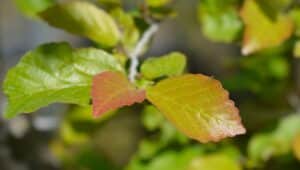
Where and When to Plant Parrotia Persica?
Parrotia Persica can be planted during the springtime when the temperature ranges from 50-85 degrees Fahrenheit. The plant prefers well-drained soil, so make sure to amend your soil before planting. Water regularly until the plant is established.
When planting Parrotia Persica, dig a hole twice as wide and deep as the rootball of the plant. Place the plant in the hole and backfill it with soil, making sure to press down gently to remove any air pockets. Water deeply after planting and mulch around the plant to help keep moisture in the ground. With proper care and a suitable climate, your Parrotia Persica should be a beautiful addition to your garden.
How To Care For a Parrotia Persica Tree
To care for a Parrotia persica, you will need to provide plenty of water and fertilizer. Not only that, you need to walk some extra steps in case you want to have a nice and beautiful plant for your home. Here are some tips on how to care for a Parrotia persica or ironwood:
- Water your Parrotia persica tree regularly, keeping the soil moist but not wet.
- Provide mulch around the tree’s base to retain moisture and reduce weeds.
- Fertilize once a year in the spring with a balanced fertilizer.
- Make sure to prune the tree regularly to keep it healthy and to look its best.
- It can tolerate light to medium shade but will do best in a sunny spot.
- Prune as needed to keep the tree shapely.
- This tree may benefit from winter protection, such as a burlap wrap or a plastic tree guard if you live in an area with cold winters.
- Protect the Parrotia persica from strong winds and hot sun.
- Remove any dead, diseased, or damaged branches immediately.
- Inspect the bark regularly for signs of pests or diseases, and treat any problems as soon as possible.
- Keep the area around your Parrotia persica tree free of weeds and debris to help prevent diseases and pests.
These are some best tips for ironwood for better growth. With proper care, your Parrotia persica tree can thrive for many years.
What are Some Parrotia Persica Problems?
Parrotia persica is a plant that is susceptible to a number of problems, chief among them being pests and diseases.
Pests commonly affecting Parrotia persica include aphids, scales, nematodes, and beetles. These can cause damage to the leaves, flowers, and branches. In addition, Parrotia persica is also susceptible to several diseases, such as bacterial canker, leaf spot, and powdery mildew. These problems can cause significant damage to the plant and may lead to its death.
To prevent these issues, it is important to provide adequate care and nutrition for the plant and regularly inspect the plant for signs of damage or disease. If any injury or disease is found, it is important to take immediate action to prevent the further spread or death of the plant.
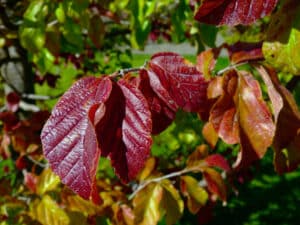
What are the Benefits of Parrotia Persica?
The Benefits of Parrotia Persica include its anti-inflammatory, anti-fungal, and antioxidant properties. It is also a source of vitamin C and other nutrients. It has been used as a traditional remedy in Iran for centuries to treat various illnesses, including colds and flu. Its leaves have also been used to make herbal tea. Additionally, it has been used as a natural dye and as a natural insect repellent.
Parrotia Persica is an excellent choice for gardens and landscapes as it provides a lovely, vibrant display of reds and oranges in the fall. It is also widely used in bonsai and other ornamental plantings. It is a resilient tree that requires minimal maintenance, making it an ideal choice for busy gardeners. Parrotia Persica is also known for its resilience against drought and pests, making it an excellent choice for areas that experience extreme weather conditions.
FAQs on Parrotia Persica
How Fast Do Persian Ironwood Trees Grow?
Persian ironwood is a medium to fast growth rate for a deciduous tree. These trees can grow up to 24 inches a year and typically reach an average height of 20 to 30 feet, although some can reach up to 40 feet. These trees have a moderate growth rate, meaning they can reach a mature size within ten years with proper care and growing conditions.
How To Prune Persian Ironwood?
Pruning a Persian ironwood tree is best done in late winter or early spring before new growth begins. Use sharp pruning shears to cut branches back to lateral buds. Make cuts at a 45-degree angle above the bud, angling away from the trunk. Always clean and disinfect your pruning tools after each use with a household cleaner or rubbing alcohol to prevent the spread of disease.
Can I Plant Parrotia Persica In The Uk?
Yes, Parrotia persica can be planted in the UK. This tree is hardy in zones 4-8 and grows best in full sun to partial shade. This tree is quite adaptable to soil types and can easily survive in various conditions. This is why you can easily plant Parrotia persica in the UK.
Is Parrotia Persica Poisonous To Dogs?
No, Parrotia Persica is not poisonous to dogs.
Where Can I Buy Parrotia Persica?
You can buy Persian ironwood at many online and physical stores that carry gardening supplies. You can also find it by doing a simple Google search. Or you can buy it here: Parrotia persica
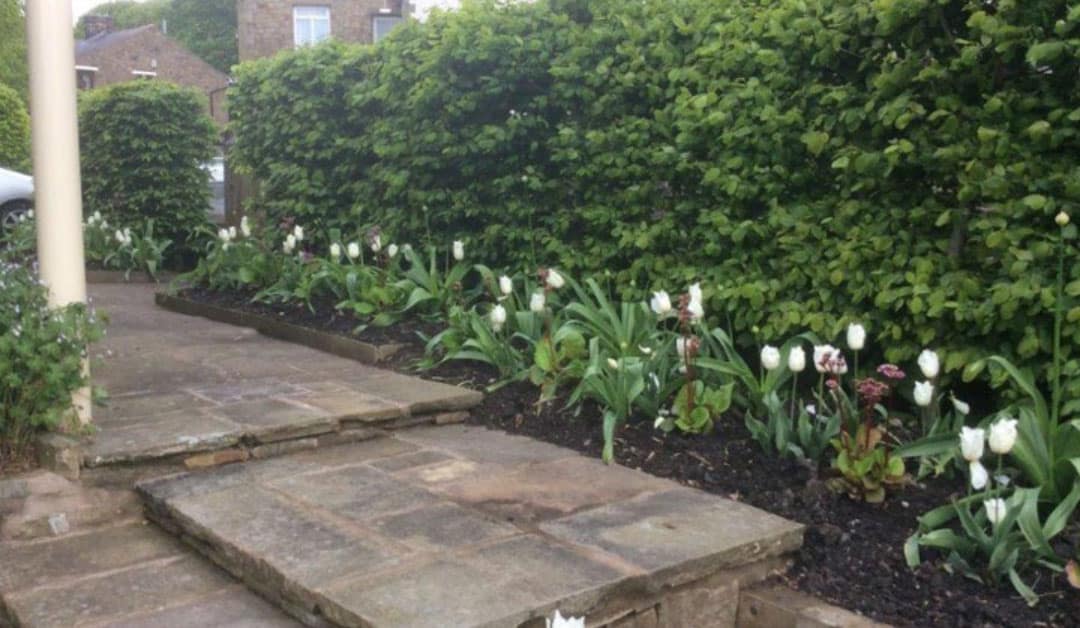
by Matthew Kemble | Oct 26, 2022 | News
The main purpose of an instant hedge is to make everything about planting a hedge easier and faster, not to mention more convenient and with a far higher success rate. Ready to plant, instant hedges make each step, from the planning and shipping to the installation and aftercare, far simpler. It saves both time and effort.
There are many benefits of instant hedging for your garden, you can explore these in our blog post Why Choose Instant Hedges for your Garden. There’s also plenty of benefits to hedging in general.
However, today we will review the major differences between instant hedges and conventional hedges, and if instant hedging will really come out on top.
Saving Time
One of the main reasons to invest in a hedge is to achieve privacy for your garden. For this to happen, hedges need to be at least 6ft tall, with no spaces between them. Using conventional methods of hedging, this can take years to achieve.
In fact, it usually takes 5-6 years for a hedge to fully mature. However, if you choose an instant hedge, a fully matured hedge can be planted in just one day. Giving you, your desired privacy – instantly!
Perfect Size, Perfect Look
We’ve all walked past hedging that looks a bit worse for wear! Large gaps, dying leaves and branches, these are all risks when planting a conventional hedge. This is because they may not all grow at the same rate; some may underperform or may not even be completely healthy once it’s matured.
By planting an instant hedge, you get identical hedges that have been carefully nurtured to grow to the same size, height and quality.
The ‘perfect look’ hedging is also far easier to achieve with instant hedges. They are grown in 1m long troughs or bags, making it simple to measure and plant, avoiding gaps but also without causing overcrowding.
To help with the efficient planting of your hedge you can download our guide.
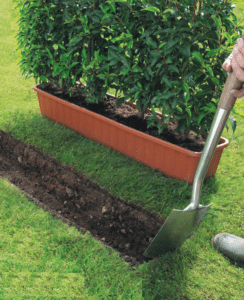
Achieve Stunning Garden Designs
Compared with a conventional hedge, ready to plant hedges are far easier to plan for when it comes to creating stunning garden designs. Garden Designs using Hedges.
No matter your size of garden, installing the correct number of hedges is simple, you just need to measure the space and purchase one hedge per one metre. As there’s no need to wait for your hedge to grow, you get the full effect of your desired garden design, instantly!
Long Term Investment
Although the initial purchase cost of a ready to plant hedge may be higher than a conventional hedge, the cost is certainly lower over time.
The cost for maintaining a conventional hedge is far higher than that of an instant hedge. This is due to the need for irrigation, shaping, staking and fertilizing over the 6 years it takes to fully mature.
With our ready to plant instant hedges, this is all done for you by our team of hedging experts. The hedge will arrive at your doorstep, mature and ready to be planted. This makes the annual cost for maintenance much lower than a conventional hedge.
For more information on our ready to plant hedges you can explore our full stocklist here. Each hedge has all the information on its appearance and specifications.

by Matthew Kemble | Aug 15, 2022 | News
Hedgerows are absolutely teeming with wildlife; one study in particular found 2,070 different species in a single stretch of 85 metres! The importance of the hedgerow network to the country simply cannot be overstated, especially since there is a worrying decline in wildlife going on at the moment. Amongst all the other benefits that hedgerows have to offer us, they can provide us with three primary excellent services for wildlife.
Helping wildlife
Hedgerows provide wildlife with a physical home
Many animals, including dormice, hibernating hedgehogs, and nesting birds, as well as insects such as butterflies and beetles, live within hedgerows. As much as 70% of the landscape in the UK is farmland, with hedgerows being one of the last remaining semi-natural habitats that are available to wildlife. As a result, many of these farmland species have been relegated to hedgerows.
Hedgerows are a brilliant complementary habitat
Hedgerows can still contribute vital resources to species that might not make it their home. For instance, many species will utilise hedgerows for food, including flowers, leaves, insects, berries, or small mammals. Some species will also rely on hedgerows for shelter from the elements or predators while they are out foraging.
Hedgerows are a way to connect the surrounding landscape
Hedgerows also enable wildlife to move between the surrounding landscape. They connect populations of wildlife that might otherwise be vulnerable or isolated. In this way they encourage the proliferation of wildlife and an increase in the connections between different species.
Specific wildlife
Hedgerows and bats
Bats will typically use hedgerows as their feeding sites, exploiting the larger population of flying insects. They will also use them in order to travel to other feeding sites from their roosts. For bats that have limited echo location capabilities, such as the Pipistrelle, having a proper network of sufficiently connected hedgerows near to their roosts is highly important.
Hedgerow trees can also make valuable roosting sites for various species of bat which choose to live in the crevices of the bark or in rot holes.
Hedgerows and birds
Hedgerows are massively important for the native birds of Britain. They provide nesting, feeding, and roosting opportunities that might otherwise be scarce within the agricultural landscape. As much as 16 of the 19 different birds included within the Farmland Bird Index have been associated with hedgerows, and 10 of these use hedgerows for their primary habitat.
The number of individual birds and bird species will tend to increase with the size of the hedge. The base of a hedge is really important for many species of nesting bird. A dense hedge that has good cover, especially in the lower metre of a hedge, tends to increase the population size of birds. Hedge height is also important because taller hedges tend to support a greater amount of nesting pairs and bird diversity. This could likely be because of a reduction in the chance of predation that these birds experience by making sure that they are living in these places.
Readyhedge are a responsible and ethical nursery, situated in the south of Worcestershire. We specialise in growing instant hedging in metre-long lengths, available in either Readyhedge bags or Readyhedge troughs. The heights of our hedges range from 30cm tall up to 200cm tall, and we offer a great, diverse range of hedges for your availability.
If you want more information about who we are, what we do and how we can help you grow the most beautiful of hedges, then take a look at our website www.readyhedgeltd.com or give us a call on 01386 750 585 for any advice you may need – we would be very happy to help you out!

by Matthew Kemble | Jul 25, 2022 | News
Hedgerows have historically been planted to act as barriers between fields, but in a society dominated by humans, they are absolutely critical havens, connectors, and corridors for all kinds of wildlife. In recent years, the vast majority of ecologists have come to view hedgerows as vital ecosystems in their own right. They are able to form a pivotal reservoir for biodiversity in landscapes dominated by human intervention, where many species would otherwise struggle for survival. By nurturing the pollinating insects, they also enhance crop yields, and achieve all of this while impressively pulling carbon out of our atmosphere. With this in mind, let’s delve into the hidden world of hedgerows!
Mutually beneficial
Countryside hedgerows mostly consist of grasses, shrubs, or trees, but they tend to vary substantially in composition and shape within and across countries. In the UK, for example, the National Hedgelaying Society has recognised more than thirty different styles of traditional hedge.
The most well-renowned benefit from hedgerows is the remarkable nature of the biodiversity that they harbour. Hedgerows can provide a year-round habitat for hundreds of species of plants, fungi, and animals, while attracting insects and birds that prey on crop-devouring little critters. Moths and bats use hedgerows as spatial cues to navigate across landscapes, and some invertebrate and mammal species have also been spotted using hedgerows to travel across agricultural areas. Wild bees residing within hedgerows can also pollinate crops in the vicinity, generating substantial financial benefits to farmers in the area.
One British ecologist actually found an incredible 2,070 species inhabiting and visiting a diverse, old hedgerow near his home! This is also not to forget that studies in Asia, Europe and Africa have shown that hedges brilliantly protect against soil-eroding floods and winds, helping to cool the air, and even aid in curbing the spread of infectious diseases by creating a barrier between herds of cattle. Planting hedgerows is also a great way to connect isolated ecosystems, since they can form a bridge across which neighbouring habitats can co-exist.
Rebuilding hedgerows
Since hedge plants can suck the carbon out of the air and into soil or plant biomass, they can help to offset the global warming emissions produced by cows. Ecologists are now stating that hedges should be one of the key solutions implemented to halt the progressions of climate change. Public body Natural England, for example, have called to increase the network of British hedgerows by 40% for biodiversity and climate benefits. It seems imperative, then, that we begin rebuilding hedgerows back into British society.
Much will depend on the maintenance of hedgerows in our country; a 2007 survey of Britain’s hedges found that as many as half were not well-maintained. The effectiveness of the hedgerows will depend largely on how they are maintained in the future. If properly managed, they could create a network that allows for more wildlife to co-exist alongside other people, a benefit that will be increasingly important as species begin to migrate in direct response to climate change.
Readyhedge are a responsible and ethical nursery, situated in the south of Worcestershire. We specialise in growing instant hedging in metre-long lengths, available in either Readyhedge bags or Readyhedge troughs. The heights of our hedges range from 30cm tall up to 200cm tall, and we offer a great, diverse range of hedges for your availability.
If you want more information about who we are, what we do and how we can help you grow the most beautiful of hedges, then take a look at our website www.readyhedgeltd.com or give us a call on 01386 750 585 for any advice you may need – we’d be happy to help!

by Matthew Kemble | Jun 10, 2022 | News
The hedgerows of the UK have become iconic in their own right, but few are familiar with the history behind the hedgerows. The history of our hedgerows reflects agricultural developments, invasions, riots, and even vast political change. Their history is intertwined with ours in a way that few can truly appreciate. Read on to find out more!
Bronze Age and Iron Age era
In the earliest stages of field creation, there was space that was carved out through processes of clearing land. It is commonly thought that the strips of woodland which are left around the perimeter of such fields are some of the first ever forms of hedgerows.
The stone walls which contributed to the base of the boundaries for Bronze Age field systems can still be seen in parts of Devon today. It is likely that these were structures were earthed up and vegetated to form hedgerows, and were most likely built upon earlier pre-existing earthen bank boundaries.
Celtic fields can still be seen in our countryside that remain from the Iron Age too, usually visible in aerial photography.
Saxon and Norman era
During the Saxon period there was a marked shift away from field boundaries of previous agricultural systems. They used an infield/outfield system that meant while one larger ‘infield’ was being cropped, everything outside of that was being used in a far less intensive manner, mainly for grazing. This meant that because they had only one central enclosed ‘field,’ having numerous hedgerows no longer became necessary.
The Norman era saw a continuation of this open field system, in which Lords would be granted tenure on land and Serfs would work the open fields. Again, this system would not require the implementation of hedgerows as we know them.
Early enclosure
By the 12th century it was required by law to maintain a perimeter boundary that included hedgerows (created using woodland) to prevent forestry game from straying onto assarted (converted to arable) land. However, in the 13th century the Lords of the country were given the power to enclose common grazing land, so long as commoners had enough for their individual needs; it didn’t quite work out that way for the commoners. What followed was a period of enclosure through the use of hedgerows, which was a welcome addition to the growing network of hedgerows, but not so great for the commoners!
During the Tudor period of history, land then became enclosed through the use of force. This led to a period of revolt among the peasants whom this deeply affected, with the 1607 Midland Revolt leading to thousands of disenfranchised people pulling down hedgerows.
Parliamentary enclosure
As the country moved into the 17th, 18th and 19th centuries, mass hedge planting led to a rapid increase in the length and number of hedgerows across the country, peaking from 1750 to 1820. The hedges that were planted during this period were largely single species hedgerows, such as hawthorn, many of which are still around today.
During the 18th century in particular, hedges still remained planted using the bank and ditch system. Then in the 19th century, when it became more popular to plant on flat surfaces as it was cheaper and quicker, 200,000 new miles of hedgerow were planted. By the end of this enclosure era, there were thought to be at least 1 million kilometres of hedgerow!
Modern history
Mass hedgerow removal took place in the years following the Second World War. A 1947 Agriculture Act financially rewarded British farmers for removing hedgerows in an effort to achieve greater food independence. The statistics here speak for themselves; a 1950 assessment conducted by the Forestry Commission came to include that we had at least 1 million km of hedgerow in the entire country, but by 2007 this was drastically reduced to 477,000km, a 52% loss!
The loss of hedgerows stabilised towards the end of the 20th century. The 1997 Hedgerows Regulations Act thankfully offered hedges far greater protection, making it a punishable offence to remove most hedgerows around the country without permission. Total hedgerow length began to increase in some areas because farmers began re-planting the previously lost hedging.
During the 20th century there were vast changes in hedgerow management. The introduction of mechanised trimming made it possible to cut all the hedges on any given farm every single year. This consequently reduces the number of total hedges that are laid or managed on a regular life cycle. There has been a detrimental impact on the health of those remaining hedgerows, which are unable to tolerate the consistent trimming regime without a slow deterioration in quality and health.
Readyhedge are a responsible and ethical nursery, situated in the south of Worcestershire. We specialise in growing instant hedging in metre-long lengths, available in either Readyhedge bags or Readyhedge troughs. The heights of our hedges range from 30cm tall up to 200cm tall.
If you want more information about who we are, what we do and how we can help you grow the most beautiful of hedges, then take a look at our website www.readyhedgeltd.com or give us a call on 01386 750 585 for any advice you may need – we’d be happy to help!








